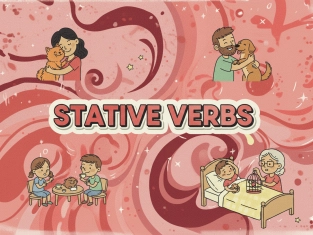Linking Verbs
Table of Contents
Exercises
Explanation
Common Linking Verbs
|
Verb |
Example |
|
be (am/is/are/was/were) |
She is happy. |
|
look |
You look tired today. |
|
seem |
He seems friendly. |
|
feel |
I feel hungry. |
|
sound |
This song sounds beautiful. |
|
smell |
The flowers smell fresh. |
|
taste |
The soup tastes spicy. |
|
become |
It became dark at 6 p.m. |
|
appear |
She appears nervous. |
Examples in Sentences
-
Maria is a doctor.
-
This pizza tastes great.
-
They are very excited.
-
The room looks clean.
-
He seems tired after work.
-
The weather became cold.
-
The music sounds loud.
These sentences describe the subject, not actions.
Linking Verb vs Action Verb
Some verbs can be linking or action verbs.
Look at the difference:
|
Linking Verb (describes) |
Action Verb (shows action) |
|
You look happy. |
You look at the stars. |
|
The dog smells funny. |
The dog smells the food. |
|
I feel cold. |
I feel the blanket. |
Tip
If you can replace the verb with am/is/are and the sentence still makes sense, it is usually a linking verb.
She looks tired.
She is tired. (Linking verb) - correct
She looks at the dog.
She is at the dog. (Action verb) - wrong
Remember
-
Linking verbs describe, not show action.
-
They tell us about feelings, looks, condition, or identity.

